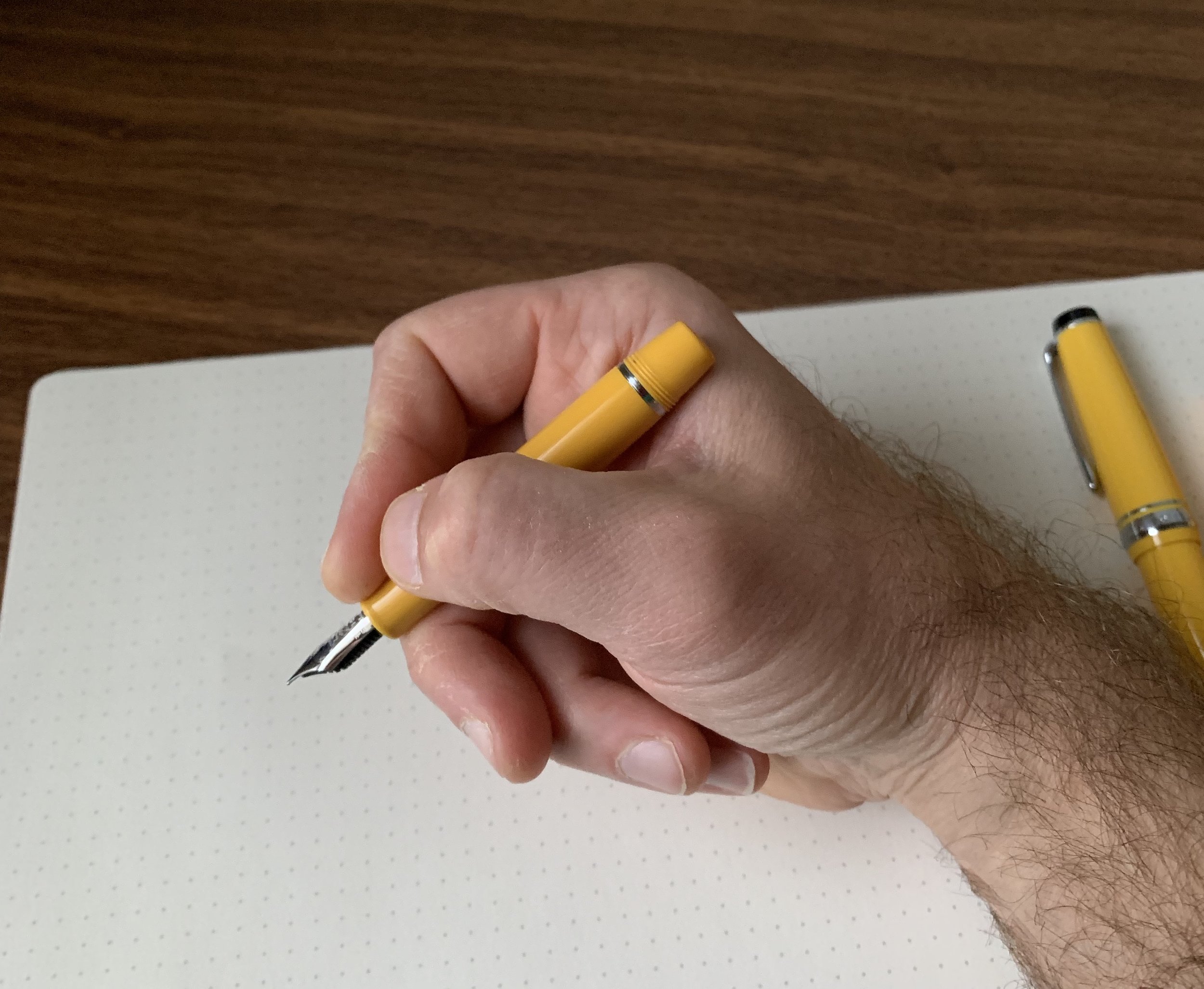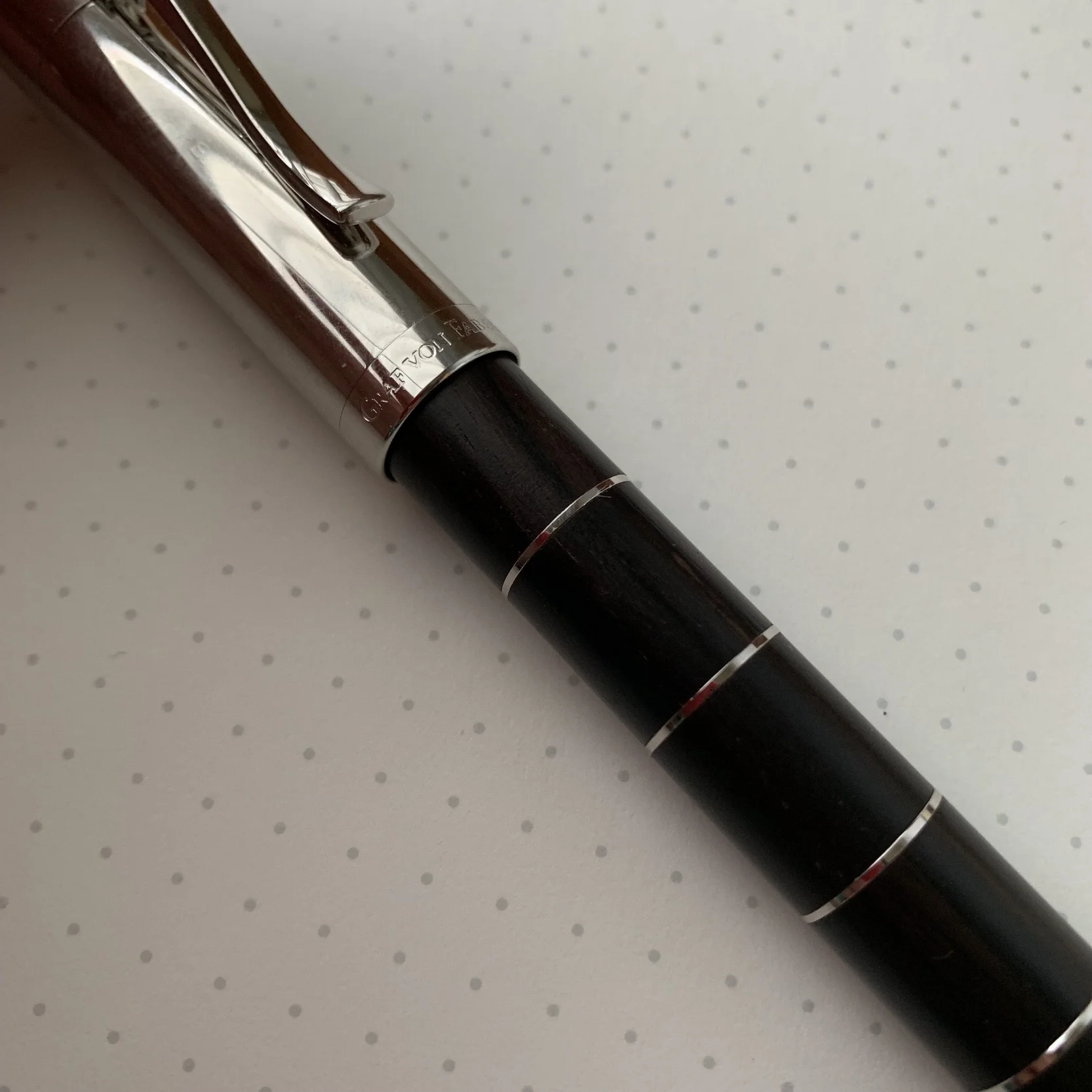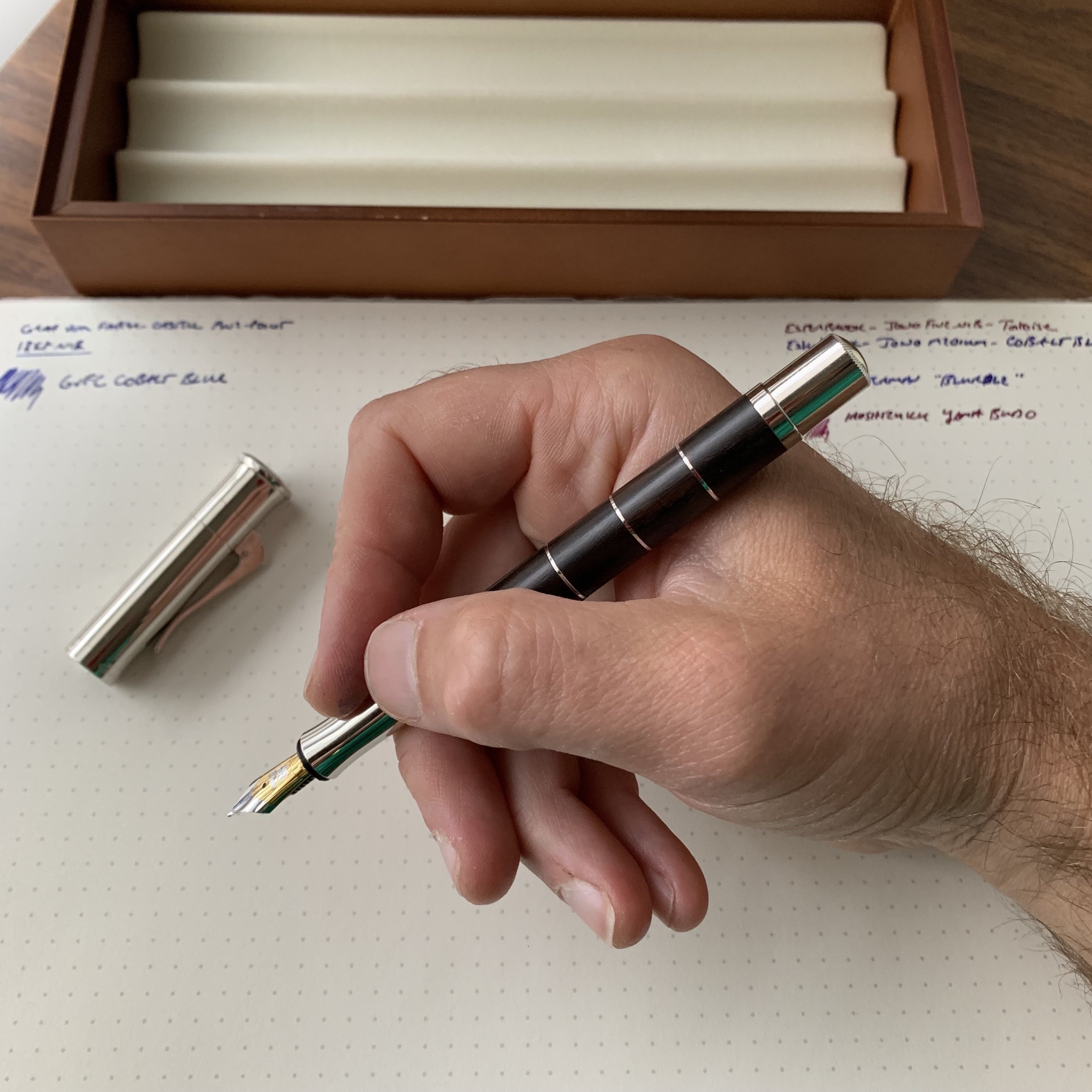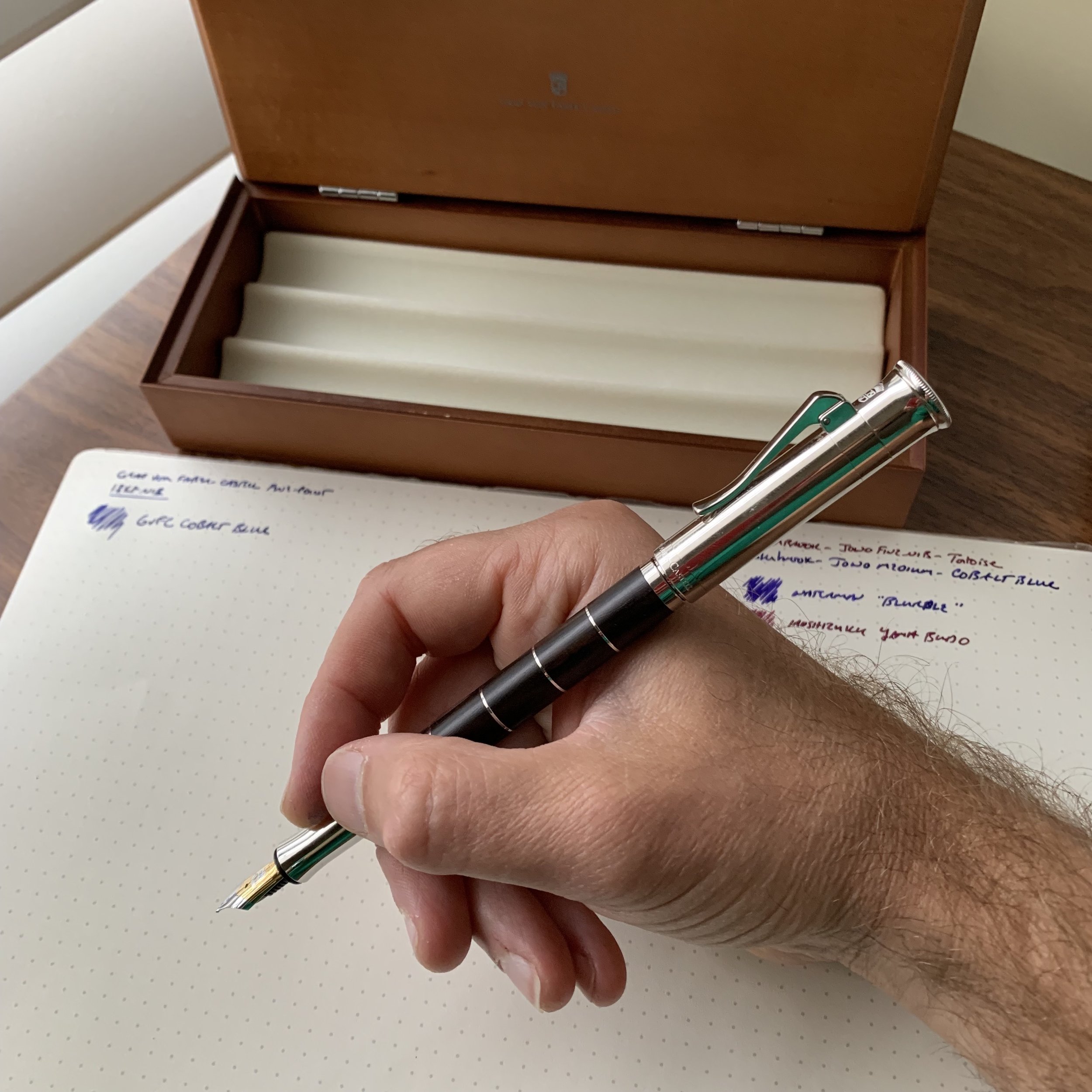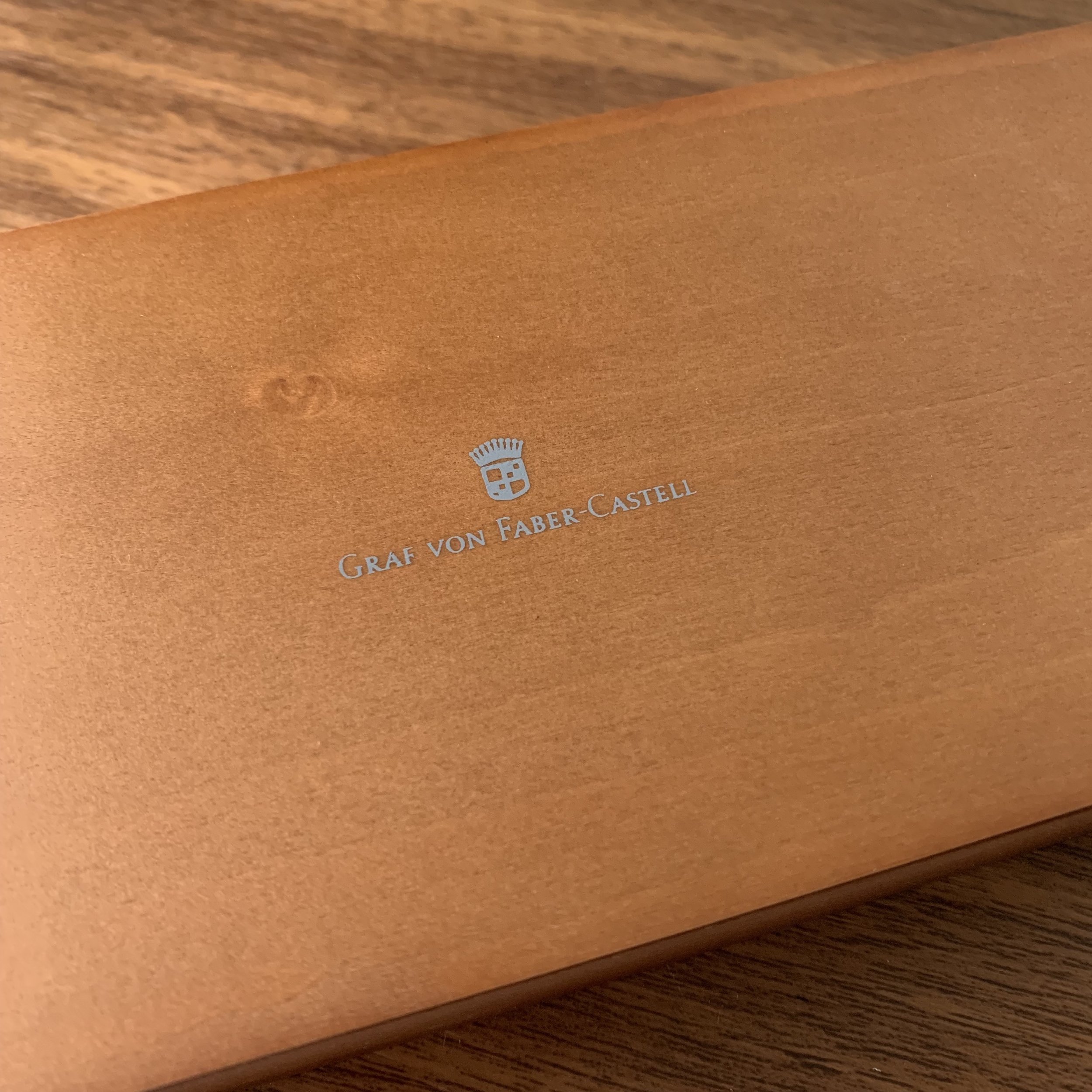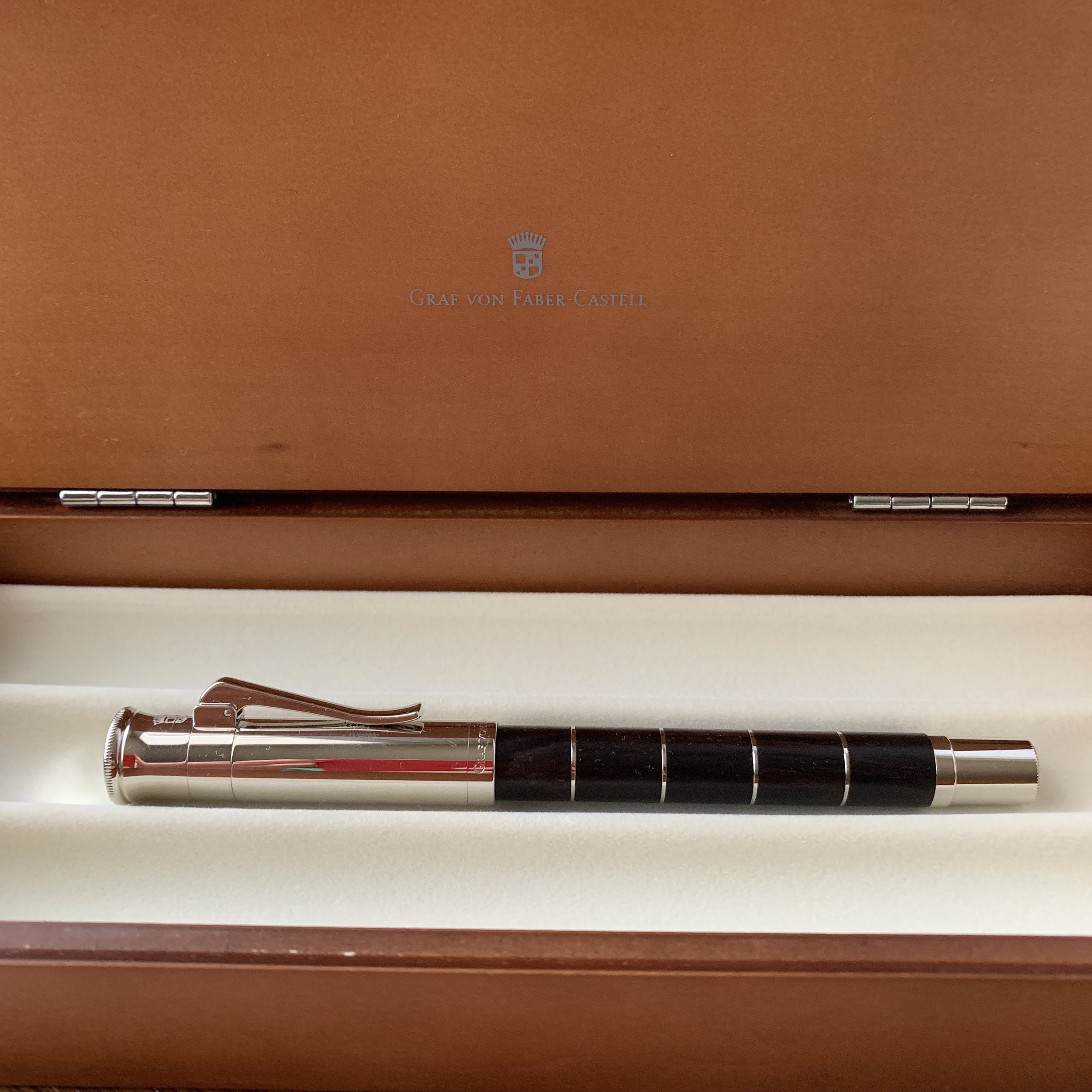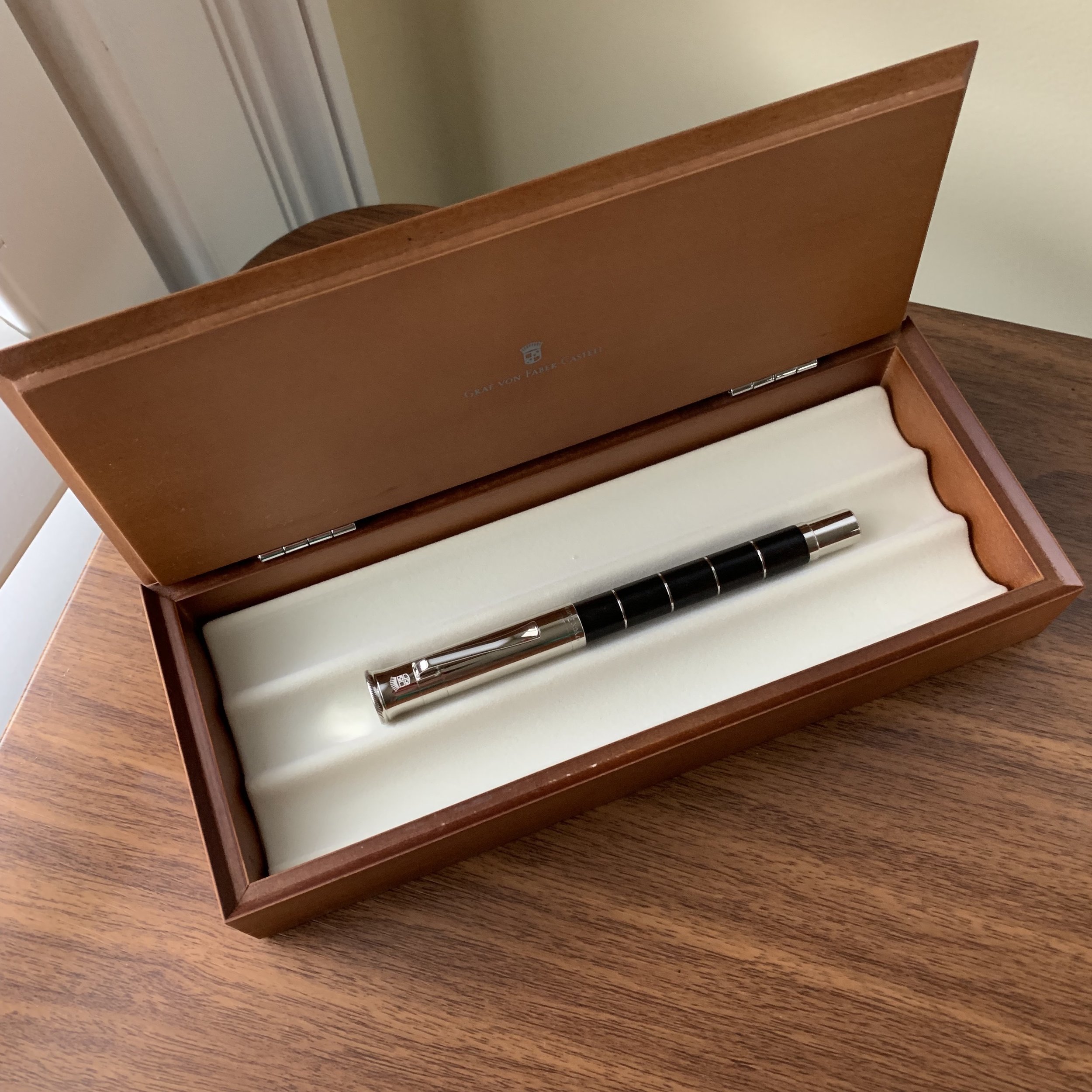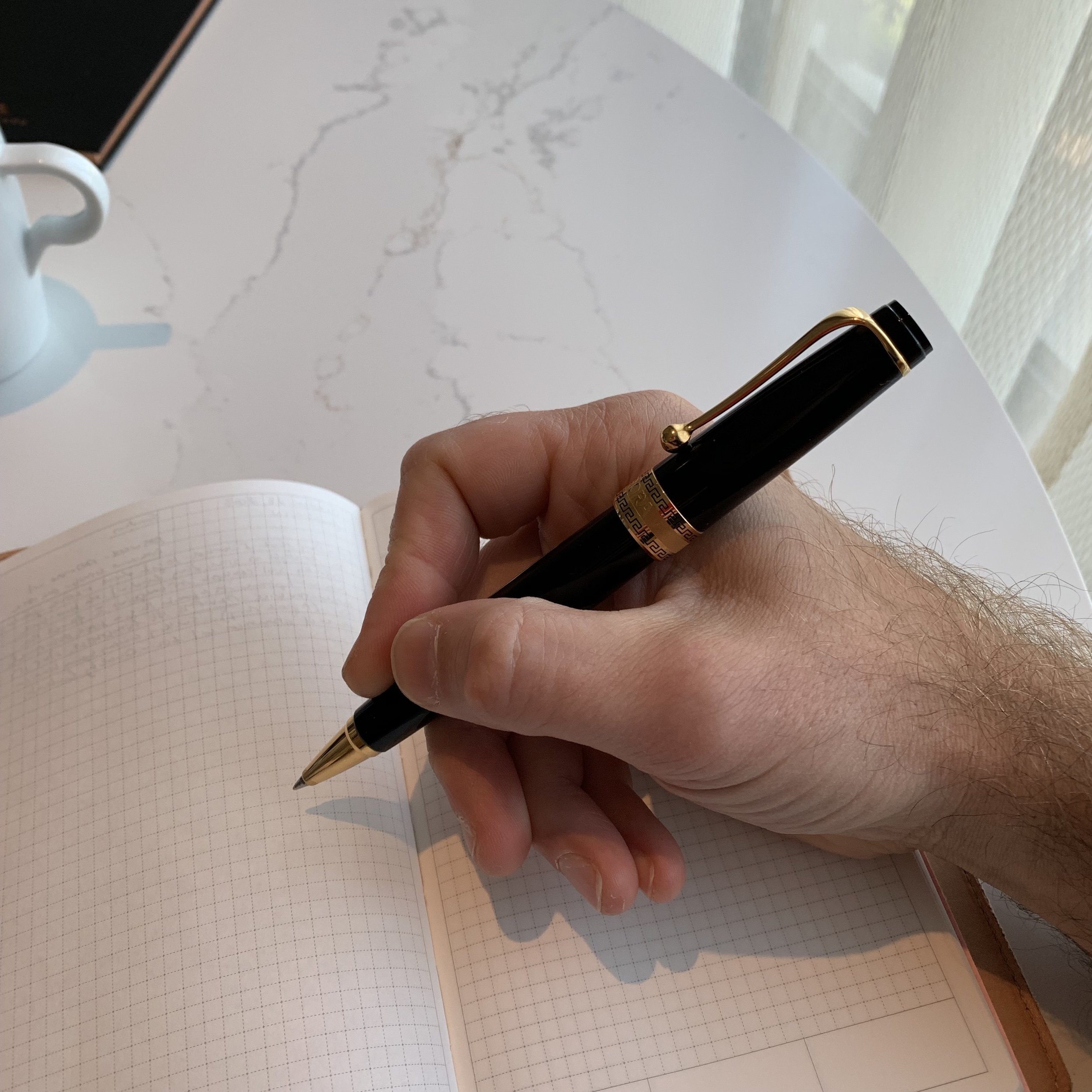Sailor discontinued the "pocket” version of its popular Pro Gear fountain pen, the Sapporo Mini, a few years ago, prompting a run on retailers’ remaining stock and, from what I recall, somewhat of a frenzy at a recent Atlanta Pen Show when a former Sailor distributor showed up with a handful of pens she was looking to unload. What many people don’t realize, however, is that Sailor continues to make these pens for the Japanese market, including for Nagasawa department store’s private label, “PenStyle." Fans of Sailor will know that Nagasawa has a close relationship with the pen company, and that Sailor private labels dozens of “Kobe Inks” for the store in addition to special edition pens.
The Nagasawa cap finial (left) compared against the standard Sailor design (right). Note that the yellow used in the Sapporo Mini is a deeper, mustard yellow, which I prefer to the brighter yellow acrylic used on the Pro Gear Color.
The differences between a standard Sailor Sapporo Mini and the Pen Style version are mostly cosmetic. The cap band is engraved “PenStyle Memo,” and instead of the Sailor anchor logo, the finial features a plain yellow dot bordered in black. While the nib is stamped “Sailor” at the bottom, leaving no doubt who made it, the primary artwork is an engraved dragon with “Kobe” and “1882” inscribed over it - a reference to the founding date of Nagasawa, from what I understand.
A different style of nib engraving, but you still know it’s a 14k Sailor nib, meaning that it’s stiff as a nail but quite smooth.
You all know that I love the standard Pro Gear, and if you’re also a fan of that pen, or a fan of the Pro Gear Slim, you’ll appreciate the Sapporo Mini as a true “pocket carry” iteration of those pens. Capped, the Sapporo Mini is tiny, fitting almost entirely inside my closed hand. Unposted, the pen feels very small and too short to be usable by almost anyone - it’s meant to be posted. The short barrel has threads at the back, allowing you to post securely, and this pen extends to almost the same length as a standard Pro Gear Slim. While it’s definitely on the smaller side, I can use it comfortably for longish periods of time.
Once this pen is posted and fully extended, it’s actually not that small (shown here compared against a standard Pro Gear).
Note that the Sapporo Mini is cartridge-only, as the barrel is too short to accept a converter. (Sailor apparently made a “mini converter” for this pen years ago, but discontinued it.) Typically, the lack of a converter option wouldn’t bother me much, since I have a bunch of cartridges lying around at any given time, but Sailor cartridges are proprietary so this ended up being a bit of a pain. I chose to stock up on cartridges of Sailor’s pigmented inks. I’m partial to the Souboku Blue-Black, but the Kiwa-Guro Nano-Black is also excellent.
Sailor’s pigmented “nano” blue-black, Souboku, has a great color that’s fairly unique. It’s water-resistant and dries quickly.
The Sailor Nano-ink cartridges have an extra little touch that I find kind of charming.
Takeaways and Where to Buy
I purchased my Sapporo Mini in yellow because, well, I have a thing for yellow pens and if yellow is an option, I’m probably going with that. The pen also comes available in red or black, with a choice of extra fine, fine, and fine-medium nibs. If you’re in the States, you can order through eBay Seller Cool Japan, where you can pick one of these up for a bit less than the price of a standard Pro Gear Slim. Cool Japan also carries a range of other Sailor/Nagasawa collaborations and other special editions, including Pro Gear Slims in custom colors like Tarumi Apricot, the Sailor 1911 Standard Clear Demonstrator with black-plated trim (referred to as the “Proske”), and the “Tequila Sunrise” Pro Gear from Sailor’s “Cocktail” series.
I keep this pen in my collection for two reasons. First, it’s a unique iteration of one of my favorite pens, the Sailor Pro Gear, and I suspect it eventually will have some value as a collectible because I don’t see Sailor/Nagasawa making this pen forever. Second, I only have one Sailor “Fine-Medium” nib in my collection, and I love this line width.
One final thought on “pocketability” - I don’t use this pen as a true “pocket pen” because it’s plastic and far from indestructible. That said, I do enjoy having a more portable version of the Pro Gear that’s very light in the shirt or jacket pocket, especially when I travel. While this isn’t a pen I ink up all the time, it’s also not one I can see myself parting with anytime soon.
Further Reading
If you like the look of the Sapporo Mini, check out my other reviews of the full-size Sailor Pro Gear fountain pens. I’ve previously reviewed the “Imperial Black” version, the Pro Gear Sky limited edition, and the “Soleil” version of the piston-filling Pro Gear Realo, which was another limited edition collaboration between Sailor and Japanese retailer Bungubox. While I’ve scaled back my collection in recent years, the Pro Gear remains one of my favorite fountain pen designs of all time.
Disclaimer: I purchased the pens featured in this review with my own funds, for my own collection. This post contains affiliate links.


